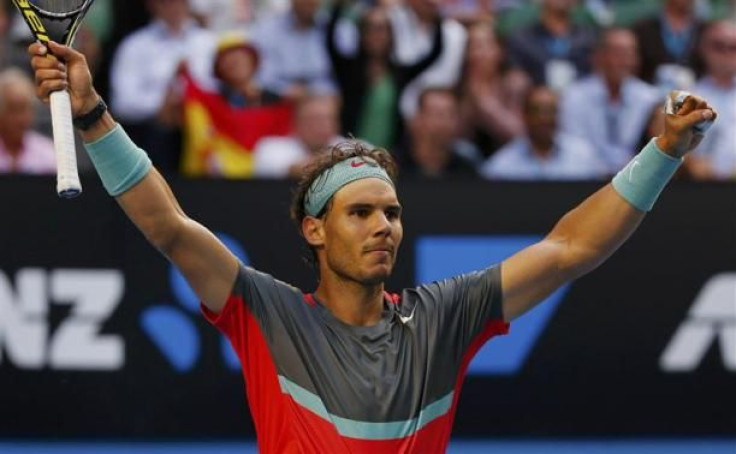Australian Open: Live Stream Info, Start Time, Preview For Nadal-Dimitrov And Federer-Murray; Rafa Now The Favorite In Melbourne?

The ending of Novak Djokovic’s three-year reign at the Australian Open by Stanislas Wawrinka will have doubtless given an added spur to the four men who will look to secure a place in the last four on Wednesday in Melbourne.
Having been a hot favorite to win a fourth-straight title and fifth overall, Djokovic’s exit has opened the door for the six men still remaining, not least Rafael Nadal. The second seed is now the leading contender to take his sensational form from 2013 into the New Year and make it three Grand Slam titles out of four entered since his return from injury just under a year ago.
After breezing through his opening three rounds, Nadal was given a proper test by Japan’s Kei Nishikori in the last 16, winning in three sets but forced to go to tiebreaks in two of them.
Next up for Nadal in the quarterfinals is talented Bulgarian Grigor Dimitrov. After having been tipped for the top for so long, the 22-year-old is finally starting to make a statement on the court and has already progressed two rounds further than at any previous Grand Slam. Yet, he faces a massive challenge if he is to go any further and finally break-free of his “Baby Federer” moniker.
The pair have met three times previously, two of them just last year, with Nadal coming on top on each occasion. The biggest encouragement for Dimitrov comes from the fact that in each match he has taken Nadal the distance.
The man with whom Dimitrov’s talents have been compared will follow him onto the Rod Laver Arena in the evening session when Roger Federer takes on Andy Murray in perhaps the most-anticipated last-eight matchup.
With talk of him being a faded force as well as still adapting to a new larger racket head, expectations were low for Federer heading into the tournament. But a virtuoso dismantling of Jo-Wilfried Tsonga in the fourth round, in which the Swiss great rolled back the years, has fuelled talk that he could add to his record 17 Grand Slam titles.
Up next for the 32-year-old is a man who was happy to profess his own low expectations in Melbourne. Murray missed the end of last year after undergoing back surgery and had precious few matches before arriving in Melbourne. Still, he has enjoyed a fairly comfortable passage through thus far and, despite dropping a set to French lucky loser Stephane Robert in the last-16, the three-time Australian Open runner up will now have hopes of going all the way.
The day in Melbourne begins with the two remaining women’s quarterfinals. First up is the meeting of the two surprise packages in the last eight, Simona Halep and Dominika Cibulkova. Halep, 22, has reached the quarterfinal stage of a Grand Slam for the first time after beating former world No. 1 Jelena Jankovic in the last round. The diminutive, but powerful, Cibuilkova has the experience edge and on the evidence of her ousting of Maria Sharapova in the last-16 will take some beating.
Perhaps the most ominous task of the day, though, belongs to Agnieszka Radwanska. The talented Pole has won just three of her 15 matches against her quarterfinal opponent Victoria Azarenka and has lost the last seven. The fact that Azarenka is on an 18-match win streak at the Australian Open only adds to Radwanska’s challenge.
When and where to watch: The day’s play on the Rod Laver Arena gets underway at 7 p.m. ET, with the two women’s quarterfinals. Nadal and Dimitrov then take to the court, not before 10 p.m. before Murray and Federer kick off the evening session at 3.30 a.m. A live stream will be available throughout the day on ESPN3. Television coverage beings on The Tennis Channel, before switching to ESPN 2 at 9 p.m. Murray's match with Federer will be shown on ESPN.
© Copyright IBTimes 2024. All rights reserved.











